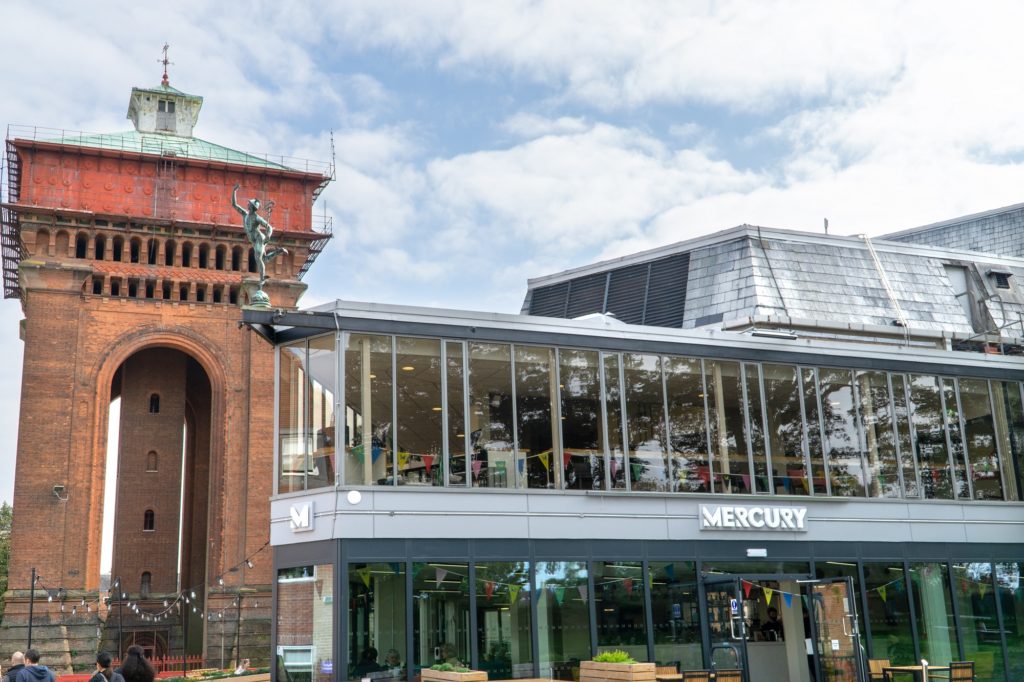Discover some of the region’s most notable properties and historic homes
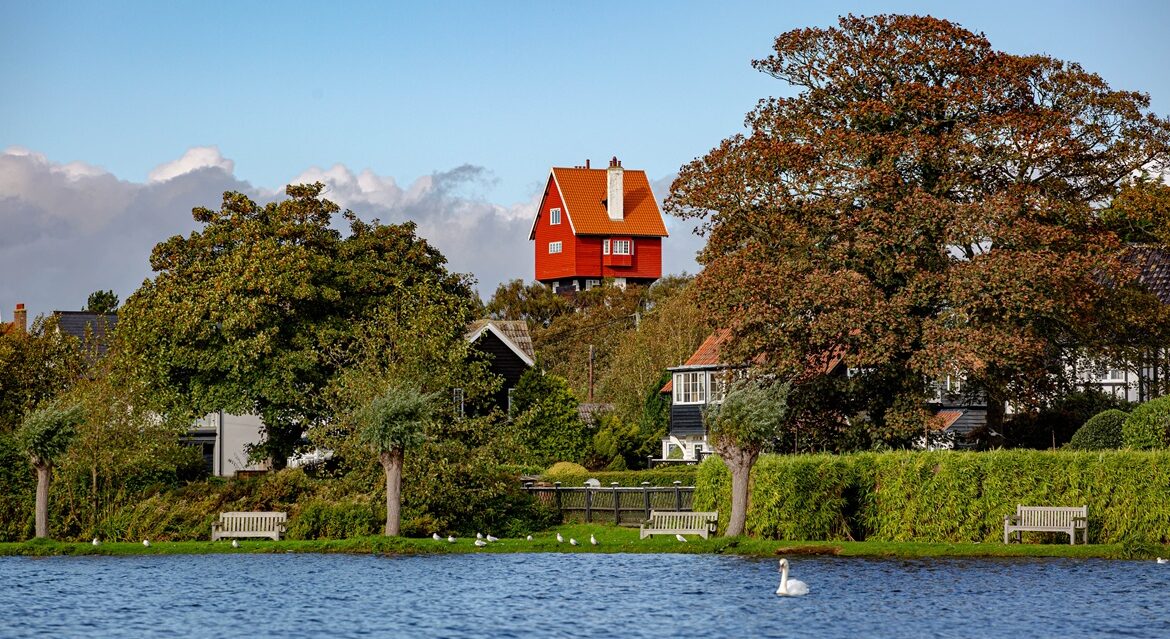
We delve into the rich history of landmark properties and remarkable residences in Essex and Suffolk. Here you will find stunning Georgian gems alongside medieval masterpieces and some more contemporary properties of architectural importance.
House in the Clouds, Thorpeness
Given Suffolk’s mainly flat landscape, tall buildings tend to stand out and there’s no missing the House in the Clouds in picturesque Thorpeness. Once a water tower, this famous folly now offers self-catering holiday accommodation with a difference – providing five bedrooms, four bathrooms, drawing and dining rooms, plus the ‘room at the top’ offering fabulous, far-reaching views of the mere, coast and the nearby golf course.
Thomas Gainsborough’s House – 46 Gainsborough Street, Sudbury
Visitors to Sudbury on the Essex/Suffolk border should seek out Gainsborough’s House. The Grade l Listed Georgian property was the birthplace of leading English painter, Thomas Gainsborough, and is now a museum and gallery that is open to the public. You can wander round the beautiful grounds and see the crinkle-crankle walled garden, complete with a mulberry tree thought to date back to the 1600s.
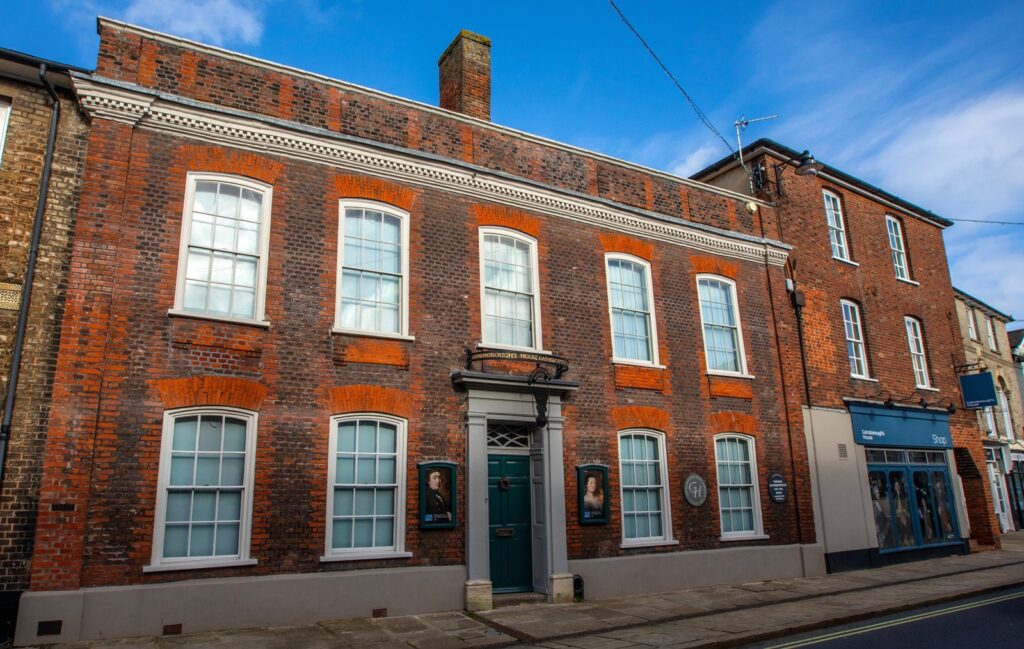
Willy Lott’s Cottage – Flatford, East Bergholt
Another famous artist, John Constable, made Willy Lott’s Cottage at Flatford the subject of several of his paintings, most notably The Hay Wain. The Grade I listed property is on the banks of the River Stour in the heart of Dedham Vale and now owned by the National Trust. Lott was a tenant farmer who worked the 39 acres around Flatford belonging to Gibbeon’s Gate Farm. This is one of several historic properties in the area, with Flatford Mill, Valley Farm and Flatford Granary also nearby.
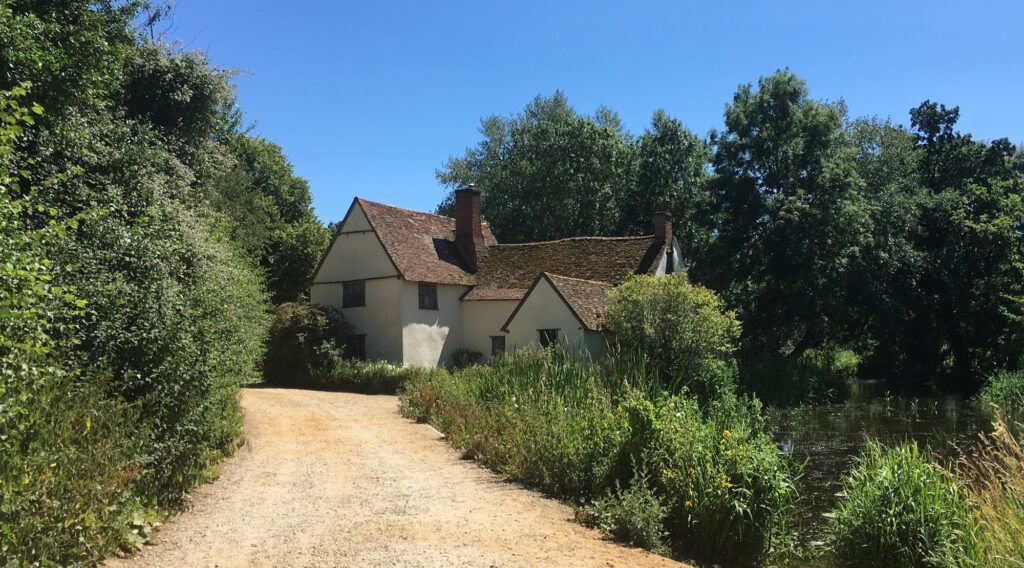
Helmingham Hall, Stowmarket
Helmingham Hall is a magnificent, moated property nestled deep in the mid-Suffolk countryside. Owned by the Tollemache family since 1480, the surrounding park and formal gardens are equally as captivating. The influence of garden designer Lady Xa Tollemache is evident, and you could easily while away a few hours here exploring the grounds, with a delicious treat from the café to round off your visit.
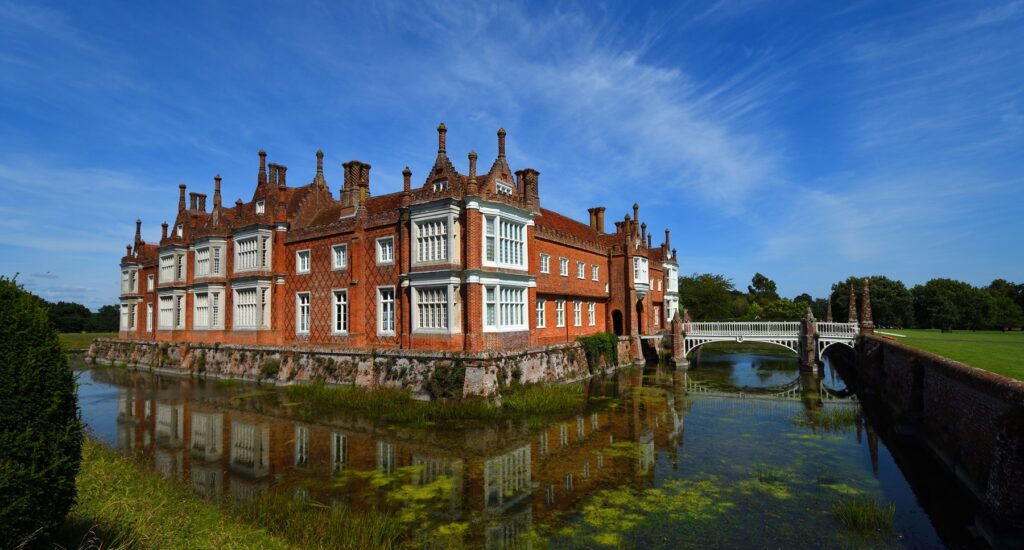
The home of composer Benjamin Britten and his partner Peter Pears, the Grade II 17th century farmhouse is surrounded by a beautiful, wildlife-friendly five acre garden. Run by Britten Pears Arts, the eclectic mix of art, artefacts and furnishings on display give a glimpse into the lives and inspirations of two extraordinary musicians.
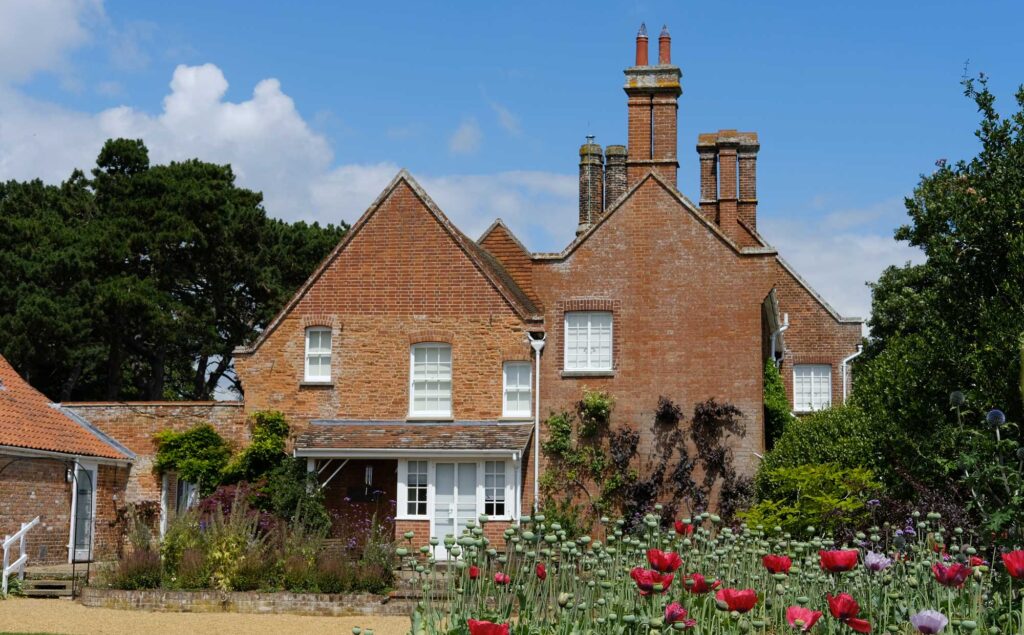
The earliest record of a tide mill on the River Deben is 1170 and it is one of the most treasured attractions in Woodbridge, known as the ‘gem in Suffolk’s crown’. Originally owned by the Augustinian Priors, it was then confiscated by Henry VIII and was in royal ownership for 28 years. Elizabeth I sold it to Thomas Seckford whose family owned it for over 100 years. Now one of only two tide mills in the country to still produce stoneground wholemeal flour, it is open to visitors from the end of March.
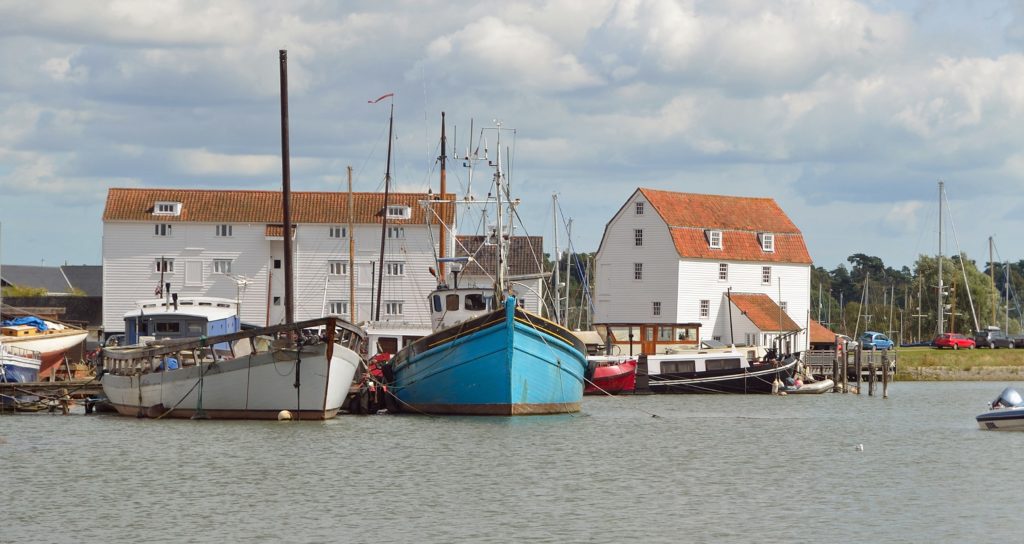
The actress and socialite Lillie Langtry transformed a farmhouse at Kentford, gutting the building and adding an extension to triple its size. The main drawing room was designed as a theatre, complete with miniature stage and a Proscenium arch. Regal Lodge became renowned for her parties and large social gatherings, and the finest oak panelling and marble fireplaces were imported from Portugal and Italy. After the First World War, the property became the Langtry Hotel, before being sold and converted back into a private residence.

Constructed in the early 1970s the subtly curving Willis Building designed by Norman Foster remains a stunning piece of architecture, granted Grade l status in 1991. Now a base for Willis Towers Watson, behind the dark smoked glass are more than 1,000 office workers and on the rooftop there’s a restaurant surrounded by a garden. One extra ‘perk’ for staff has now gone – a swimming pool for employees to enjoy during their lunch break.
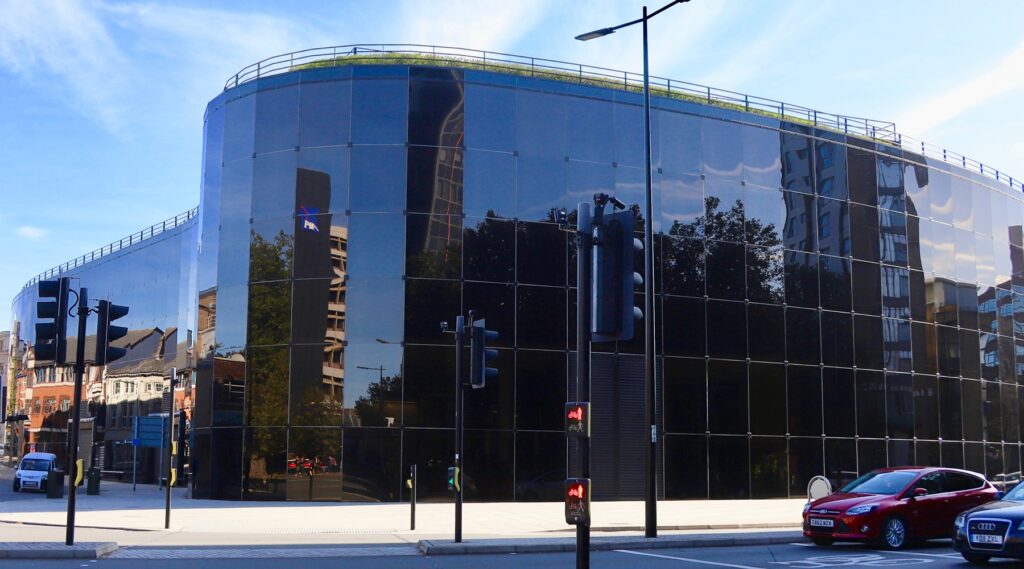
This imposing Grade ll* Listed Georgian fronted property definitely has the ‘wow factor’, having been comprehensively refurbished after being vacant for 10 years. Dating back to the 16th century, the house was once home to the notorious Kray twins, who were evacuated to Hadleigh in 1940 along with their older brother Charlie and mother Violet. The property is within easy walking distance of Hadleigh’s thriving High Street and surrounded by immaculate formal gardens.
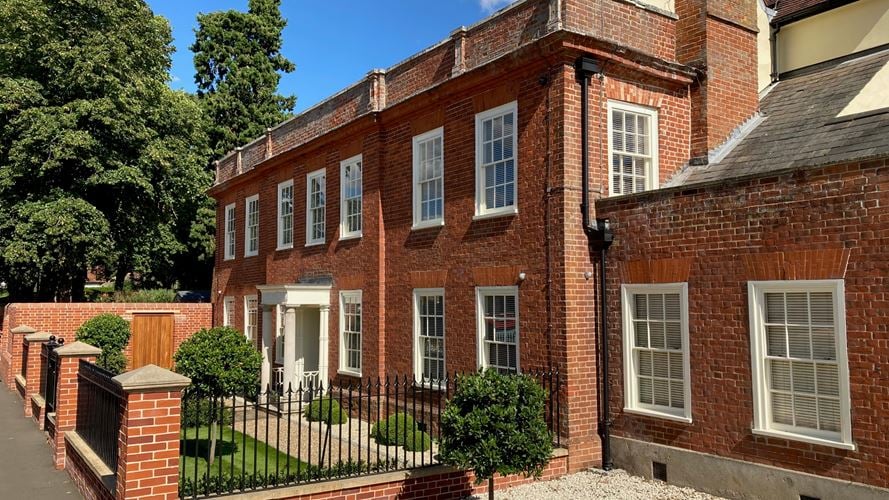
Photo credit: Historic England
The current fort was built in the 18th century, with later additions, and played an important role in the First and Second World Wars. Located on the outskirts of Felixstowe, you can visit the fort and discover the rich military and maritime heritage, whilst winding your way through the maze of passageways. Felixstowe Museum is also located on the Landguard peninsula, between the fort and Port of Felixstowe.
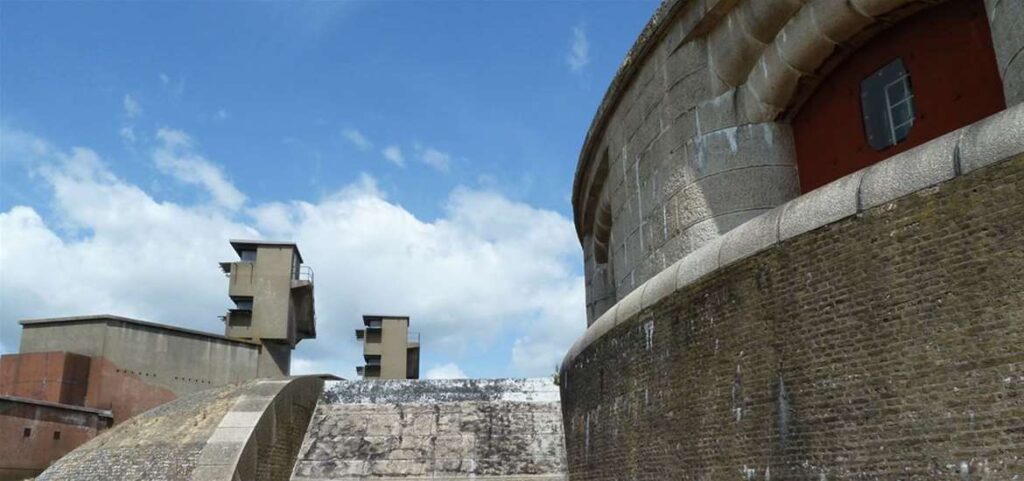
It may not be an architectural beauty but there’s no missing the Jumbo Water Tower on Colchester’s skyline. Constructed in 1883, it’s one of the largest surviving Victorian municipal water towers in Britain, which has been in the news recently after receiving an £8m grant from the National Lottery Heritage Fund. The site’s leaseholders, North Essex Heritage, aim to make the 131ft tower accessible to the public for heritage and events space.
